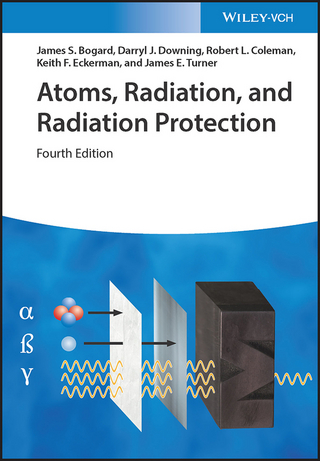
Nanosensors
CRC Press (Verlag)
978-0-367-51480-8 (ISBN)
Presenting an interdisciplinary approach, blending physics, chemistry and biology, this new edition is broad in scope and organised into six parts; beginning with the fundamentals before moving onto nanomaterials and nanofabrication technologies in the second part. The third and fourth parts provide a critical appraisal of physical nanosensors, and explore the chemical and biological categories of nanosensors. The fifth part sheds light on the emerging applications of nanosensors in the sectors of society, industry, and defense and details the cutting-edge applications of state-of-the-art nanosensors in environmental science, food technology, medical diagnostics, and biotechnology. The final part addresses self-powering and networking issues of nanosensors, and provides glimpses of future trends.
This is an ideal reference for researchers and industry professionals engaged in the frontier areas of material science and semiconductor fabrication as well as graduate students in physics and engineering pursuing electrical engineering and electronics courses with a focus on nanoscience and nanotechnology.
Key features:
Provides an updated, all-encompassing exploration of contemporary nanosensors and highlights the exclusive nanoscale properties on which nanosensors are designed.
Presents an accessible approach with a question-and-answer format to allow an easy grasp of the intricacies involved in the complex working mechanisms of devices.
Contains clear, illustrative diagrams enabling the visualization of nanosensor operations, along with worked examples, end of chapter questions, and exhaustive up-to-date bibliographies appended to each chapter.
Vinod Kumar Khanna, Ph.D is a retired Chief Scientist from the CSIR-Central Electronics Engineering Research Institute, Pilani (Rajasthan), India, and a former Professor at the Academy of Scientific and Innovative Research (AcSIR), India. He has worked for more than 37 years on the design, fabrication and characterization of semiconductor devices and micro/nanoelectronic sensors. He has published 16 books, 6 chapters in edited books, and 192 research papers in refereed journals and conference proceedings. He also has 5 patents to his name.
Preface to the Second Edition
Preface to the First Edition
Acknowledgments
Author’s Profile
About the Book (2nd Edition)
Abbreviations and Acronyms
Mathematical Notation
Part I: Fundamental Concepts of Nanosensors
Introduction to Nanosensors
Part II: Nanomaterials and Micro/Nanofabrication Facilities
Materials for Nanosensors
Nanosensor Laboratory
Part III: Physical Nanosensors
Mechanical Nanosensors
Thermal Nanosensors
Optical Nanosensors
Magnetic Nanosensors
Part IV: Chemical and Biological Nanosensors
Chemical Nanosensors
Nanobiosensors
Part V: Emerging Applications of Nanosensors
Nanosensors for Societal Benefits
Nanosensors for Industrial Applications
Nanosensors for Homeland Security
Part VI: -Powering, Networking and Trends of Nanosensors
Nanogenerators and Self-Powered Nanosensors
Wireless Nanosensor Networks and IoNT
Overview and Future Trends of Nanosensors
Index
| Erscheinungsdatum | 17.08.2022 |
|---|---|
| Reihe/Serie | Series in Sensors |
| Zusatzinfo | 78 Tables, black and white; 335 Illustrations, black and white |
| Verlagsort | London |
| Sprache | englisch |
| Maße | 216 x 279 mm |
| Gewicht | 1740 g |
| Themenwelt | Naturwissenschaften ► Biologie |
| Naturwissenschaften ► Physik / Astronomie ► Angewandte Physik | |
| Technik ► Elektrotechnik / Energietechnik | |
| Technik ► Maschinenbau | |
| Technik ► Umwelttechnik / Biotechnologie | |
| ISBN-10 | 0-367-51480-X / 036751480X |
| ISBN-13 | 978-0-367-51480-8 / 9780367514808 |
| Zustand | Neuware |
| Haben Sie eine Frage zum Produkt? |
aus dem Bereich


